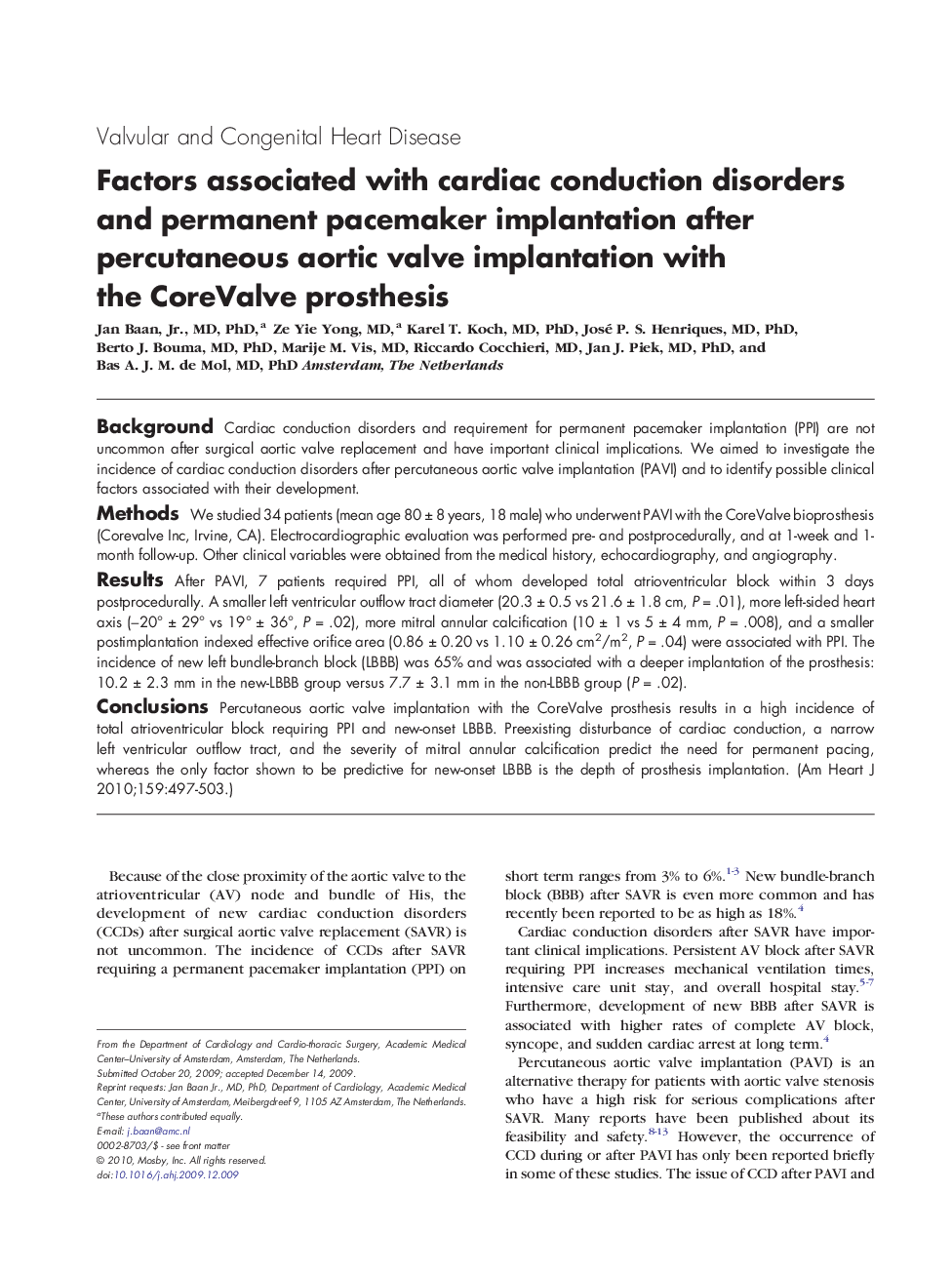| کد مقاله | کد نشریه | سال انتشار | مقاله انگلیسی | نسخه تمام متن |
|---|---|---|---|---|
| 2850523 | 1167784 | 2010 | 7 صفحه PDF | دانلود رایگان |

BackgroundCardiac conduction disorders and requirement for permanent pacemaker implantation (PPI) are not uncommon after surgical aortic valve replacement and have important clinical implications. We aimed to investigate the incidence of cardiac conduction disorders after percutaneous aortic valve implantation (PAVI) and to identify possible clinical factors associated with their development.MethodsWe studied 34 patients (mean age 80 ± 8 years, 18 male) who underwent PAVI with the CoreValve bioprosthesis (Corevalve Inc, Irvine, CA). Electrocardiographic evaluation was performed pre- and postprocedurally, and at 1-week and 1-month follow-up. Other clinical variables were obtained from the medical history, echocardiography, and angiography.ResultsAfter PAVI, 7 patients required PPI, all of whom developed total atrioventricular block within 3 days postprocedurally. A smaller left ventricular outflow tract diameter (20.3 ± 0.5 vs 21.6 ± 1.8 cm, P = .01), more left-sided heart axis (−20° ± 29° vs 19° ± 36°, P = .02), more mitral annular calcification (10 ± 1 vs 5 ± 4 mm, P = .008), and a smaller postimplantation indexed effective orifice area (0.86 ± 0.20 vs 1.10 ± 0.26 cm2/m2, P = .04) were associated with PPI. The incidence of new left bundle-branch block (LBBB) was 65% and was associated with a deeper implantation of the prosthesis: 10.2 ± 2.3 mm in the new-LBBB group versus 7.7 ± 3.1 mm in the non-LBBB group (P = .02).ConclusionsPercutaneous aortic valve implantation with the CoreValve prosthesis results in a high incidence of total atrioventricular block requiring PPI and new-onset LBBB. Preexisting disturbance of cardiac conduction, a narrow left ventricular outflow tract, and the severity of mitral annular calcification predict the need for permanent pacing, whereas the only factor shown to be predictive for new-onset LBBB is the depth of prosthesis implantation.
Journal: American Heart Journal - Volume 159, Issue 3, March 2010, Pages 497–503